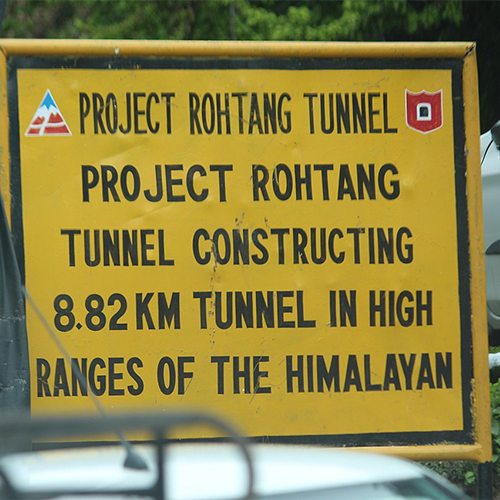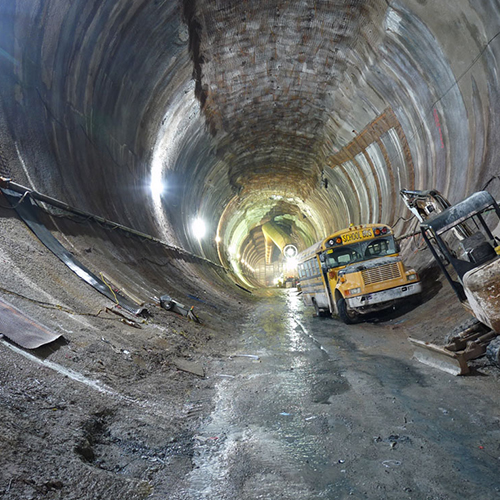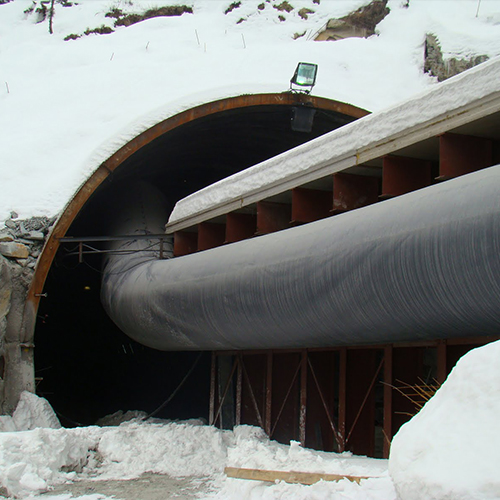Rohtang Pass, now known as Atal Tunnel, is a very famous and popular mountain pass, almost 13,058 ft, situated on the eastern Pir Panjal Range of the Himalayas around 51 km from Manali. Especially known for its mesmerizing landscape, the pass connects the Kullu Valley with the Lahaul and Spiti Valleys of Himachal Pradesh, India.
Known for its scenic beauty, Rohtang Pass holds strategic importance for India. Every year, from July to September, the road becomes a passage to the people of Lahul Valley, transporting their cash crop, potatoes, and peas to the markets across the Atal Tunnel to Kullu and earning money for the unstable weather period of 9 months.
The construction of the tunnel was very much awaited and was finally inaugurated on Oct 3rd, 2020 by India´s Prime Minister Narendra Modi.
Now that we have introduced the Rohtang Atal Tunnel, let’s see Encardio Rite’s project overview, the instrument used, and the services provided.
Project Overview:

Recognized as one of the highest trafficable passes in the world, the Rohtang Pass is designed to create an all-weather route to Leh and Lahaul, and Spiti valleys in Himachal Pradesh. The Rohtang Pass Highway Tunnel is situated in the Western Himalaya region of Northern India with an altitude of 3,980 m. With a length of 9.02km, it is also the longest tunnel in the world at an altitude of over 3,000 meters or 10,000 feet above mean sea level.
For about four months, the pass is covered with white sheets of heaviest snowfall and blizzards, making the route inaccessible for anyone.
Renamed after the former Prime Minister of India, Mr. Atal Bihari Vajpayee, the tunnel reduces the travel distance from 4 to 6 hours to only 30 minutes. It also reduces the distance between Manali and Keylong by about 46 km (28.6 mi).
The Rohtang Atal Highway Tunnel with its 8.8km of length is the longest road tunnel in India situated at a high altitude. Apart from the high altitude and uncooperative climate, the geological condition in the Himalayas was a big challenge faced by the Encardio Team. Braving the freezing weather, snowfall, frequent floods, and thin air, the team soldiered forward, providing the most accurate sensors and instrumentations.
The rocks found within the tunnel area are mainly schist and migmatite with expected disturbed zones and in some individual areas, high squeezing rock was also found.
| Also Read: Bridge Monitoring – Harry W. Nice Memorial Bridge – A Case Study |
Rohtang Pass Tunnel Details:
Shape (cross-section) of the tunnel: Horseshoe
- Finished width: 10.00 m (32.8 ft) at road level.
- Construction technique: Drill & Blast with NATM.
- Overburden: Maximum 1,900 m, average more than 600 m.
- Emergency tunnel: A 2.25 m high and 3.6 m wide emergency tunnel is integrated into the tunnel cross-section beneath the main carriageway. There are 18 egress tunnels, with an opening after every 500 meters in case of any hazard or emergency. Other safety measures include telephone connections at every 150 meters for emergency communication, fire hydrant mechanisms at every 60 meters, auto incident detection system with CCTV cameras every 250 meters, air quality monitoring at every one Km, evacuation lighting/exit signs, and broadcasting system throughout the tunnel among others.
- The Atal Rohtang Tunnel will be able to take traffic of 3000 cars or 1,500 trucks per day, capping the speed limit at 80 km/hr. It also has a state-of-the-art electromechanical system including a semi-transverse ventilation system.
- There are pollution sensors in the tunnel that monitor the air quality in the tunnel. If the quality is below the recommended level, fresh air is injected into the tunnel with the help of two heavy-duty fans on each side of the tunnel.
Monitoring Services for Rohtang Pass Tunnel

Encardio Rite was awarded the subcontract for the complete monitoring solutions for the tunneling work. Let’s have a look at its monitoring solutions.
Being an expert and experienced in geotechnical monitoring, Encardio Rite provided world-class monitoring services during tunneling. Apart from that, their team also made sure that they were one step ahead of any mishap by continuously conducting geophysical predictions by Tunnel.
Seismic Prediction System (TSP) before tunneling which recognizes any early signs of fault or fracture zones, or zones where the rock mass characteristic changed. A geological prognosis could be given that enabled the tunnel site management to determine necessary forthcoming tunneling measures.
Apart from that, a number of turnkey services were provided which are listed below.
| Also Read: Dubai Metro Case Study: Monitoring the Longest Driverless System in the World |
Turnkey Services for Rohtang Pass Tunnel
- Supply and installation of geotechnical instruments
- Tunnel seismic prediction by TSP
- Weekly and monthly reporting with evaluation & interpretations
Encardio Rite uses a list of instruments during the monitoring phase of the Rohtang Pass Tunnel. Have a look at it below:
Instrument Used in Rohtang Pass Tunnel:

- Multi-point extensometer: This particular instrument was used for monitoring rock settlement. 3-4 points MPBX were installed at the north portal site at different chainage of the Rohtang Pass tunnel. The reading of the extensometer presented helpful information about rock behavior and its monitoring.
- Load Cell: This instrument helps to convert force into measurable electrical output. Load cells were installed at a few locations near the 3-point extensometer to correlate the data.
- Bi-reflective target: Installed to measure convergence, these were placed throughout the tunnel at different arrays.
- Tunnel Seismic Prediction System (TSP): TSP measurements were applied at both the North and South portals at an interval of 80-100 m. In most of the survey predictions, the range was able to reach 50 to 100m ahead of the tunnel face in order to fulfill a sufficient coverage of pre-information. The conclusion was that TSP was an invaluable tool that helped to obtain additional important information on the condition of the rocks which had to be excavated. TSP made is successful to achieve sufficient quality data with a prediction range of 50 to 100 m ahead of the tunnel face.
Apart from the monitoring services, turnkey services, and supply and installation of geotechnical instruments, an experienced and proficient I&M Encardio team was placed on the site to rapidly deliver reliable data and information, thereby ensuring the safety of people, structures, and construction.
Monitoring reports included interpretation of variations observed in instrument data and the factors likely to affect their behavior e.g. construction, rock movement, etc. Such crucial information was provided to the contractor regularly.
The Rohtang Pass Tunnel is expected to be open to the public later this year. It will definitely lead to a boost in tourism in the region. Apart from that, it will also connect the natives of the Lahaul and Spiti valleys to the rest of the country as the tunnel will be functional even during harsh weather conditions.